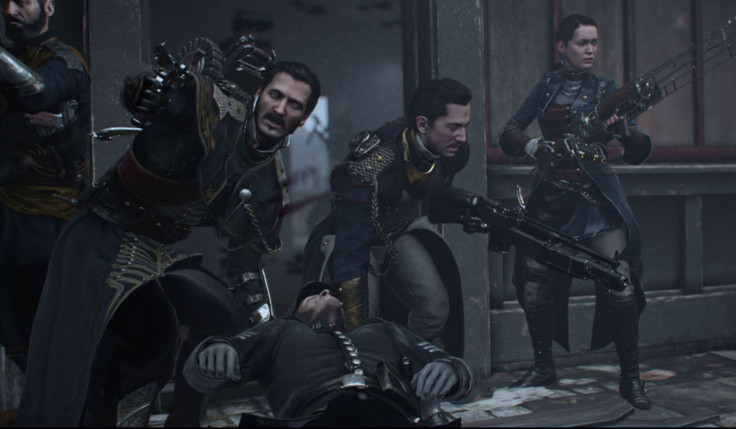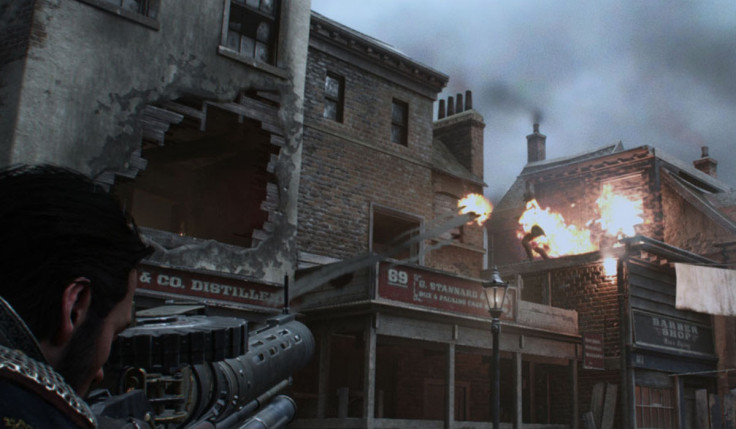The Order: 1886 PS4 Preview - Sony's Soulless Answer to Gears of War

"I think story and visuals are very high [priorities]. Gameplay is something that... it's a game, we make games, we can't get around it."
That is a quote from The Order: 1886's game director Dana Jan, said in an interview with CVG back in May. It's a quote that will haunt the Sony exclusive shooter until its release next February, and with good reason.
The Order's Hollywood aspirations have hardly been a secret, but when one of the game's directors is making the core of what makes his game 'a game' sound like a hindrance and after-thought, then that's going to set off a few alarm bells.
None of this was helped when at E3 Sony debuted a trailer which was more about showing off how well the game transitions from cutscene to gameplay than it was about giving potential players a reason to believe it might actually be fun to play.
It looked slow, the shooting looked weak, the scope of what the player could do appeared limited and the demo I played at last week's EGX 2014 did nothing to alleviate those fears.
Cutscene – gameplay – cutscene – gameplay – cutscene – gameplay – cutscene – gameplay.

That's how the demo unfolded over a fifteen-to-twenty minute period. This may have been forgivable if the gameplay was fun in any way, but instead it was cold and routine, playing like the afterthought Dana Jan has made it sound.
It would be unfair to judge a developer's whole work based on a single quote from its studio director (which he almost certainly wholeheartedly regrets) but not one thing about The Order: 1886 released to date seems to disprove his apparent development ethos.
The gameplay's lack of soul essentially boils down to respawning enemies who take cover behind the same pieces of scenery and only move when popping out to provide you with a target. Kill one and another will take its place - its enemy AI design from the PS2 era and it is unforgivable in a first party production.
Lead character Galahad's thermite rifle operates in a fun way (fire with R2 to launch the thermite and press R1 to ignite it) but shooting feels weak and ineffectual. Even if you have engulfed a group of enemies in flames or hit a headshot from distance with a pistol, the weaponry feels so weightless and feedback so feeble.
You're firing an enormous fantasy weapon but it feels like clicking a mouse to view a series of animations unfolding one after the other like its a steampunk powerpoint presentation.
Shooting from cover (bizarrely, the player moves in and out of cover using two different buttons) was not the thing to do though. As our group of heroes moved toward a nearby building, one gets shot in the leg, triggering a forced perspective shooting segment as you drag him to the door.
Then when inside, the player is tasked with finding an exit, which involves walking around a small room at a snail's pace while a comrade bleeds to death, either hitting X to read a piece of paper or hitting X at the only other marked object in the room, which then moves the action forward.
The Order: 1886 appears to be Sony's answer to Gears of War: a heavy-duty cover-based shooter steeped in mythology. What Gears had that The Order doesn't, is a tight and fun set of gameplay mechanics to support its B-movie, over-the-top story.
Incredibly satisfied with its own impressive visuals, right now The Order: 1886 feels like a game that's ashamed to be a game, and really there's nothing sadder to see from a first party console exclusive.
© Copyright IBTimes 2025. All rights reserved.


















